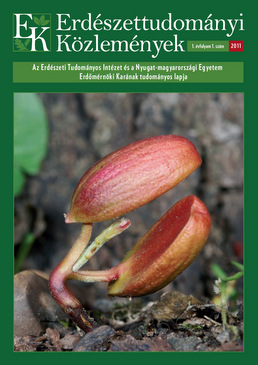A possible effect of climate change in forest management
Ernő Führer, György Marosi, Anikó Jagodics & István Juhász
Correspondence
Abstract
The expected climate change will basically affect the ecological and economic conditions of forest management. We applied the Forestry Aridity Index (FAI) to determine and characterize the areas of forestry climate classes in three forestry regions of the mountain range Bakony and to reveal the changes according to two climate scenarios. We evaluated the production capacities of climate indicator tree species (beech, hornbeam, sessile oak and Turkey oak) and the profitability of forest management using the economic model of primary wood production. Based on this we were able to state that the forestry climate classes move in accordance with the climate scenarios: the area of beech climate disappears or decreases and the area of sessile oak–Turkey oak climate increases significantly. Furthermore, the production capacities of climate classes will deteriorate. The expectable yield and forest rent of these tree species will be 15% lower in the case of a drastic scenario. This will result in the decrease of proceeds and due to this the sustainability of forests will be uncertain in the future.
Keywords: forestry climate classes, production capacity, periodic gross margin, forest rent
Open Acces
For non-commercial purposes, let others distribute and copy the article, and include in a collective work, as long as they cite the author(s) and the journal, and provided they do not alter or modify the article.
Cite this article as:
Führer, E., Marosi, Gy., Jagodics, A. & Juhász, I. (2011): A possible effect of climate change in forest management. Bulletin of Forestry Science, 1(1): 17-28. (in Hungarian)
Volume 1, Issue 1
Pages: 17-28
First published:
1 September 2011
Related content
14
More articles
by this authors
6
Related content in the Bulletin of Forestry Science*
More articles by this authors in the Bulletin of Forestry Science
* Automatically generated recommendations based on the occurrence of keywords given by authors in the titles and abstracts of other articles. For more detailed search please use the manual search.
